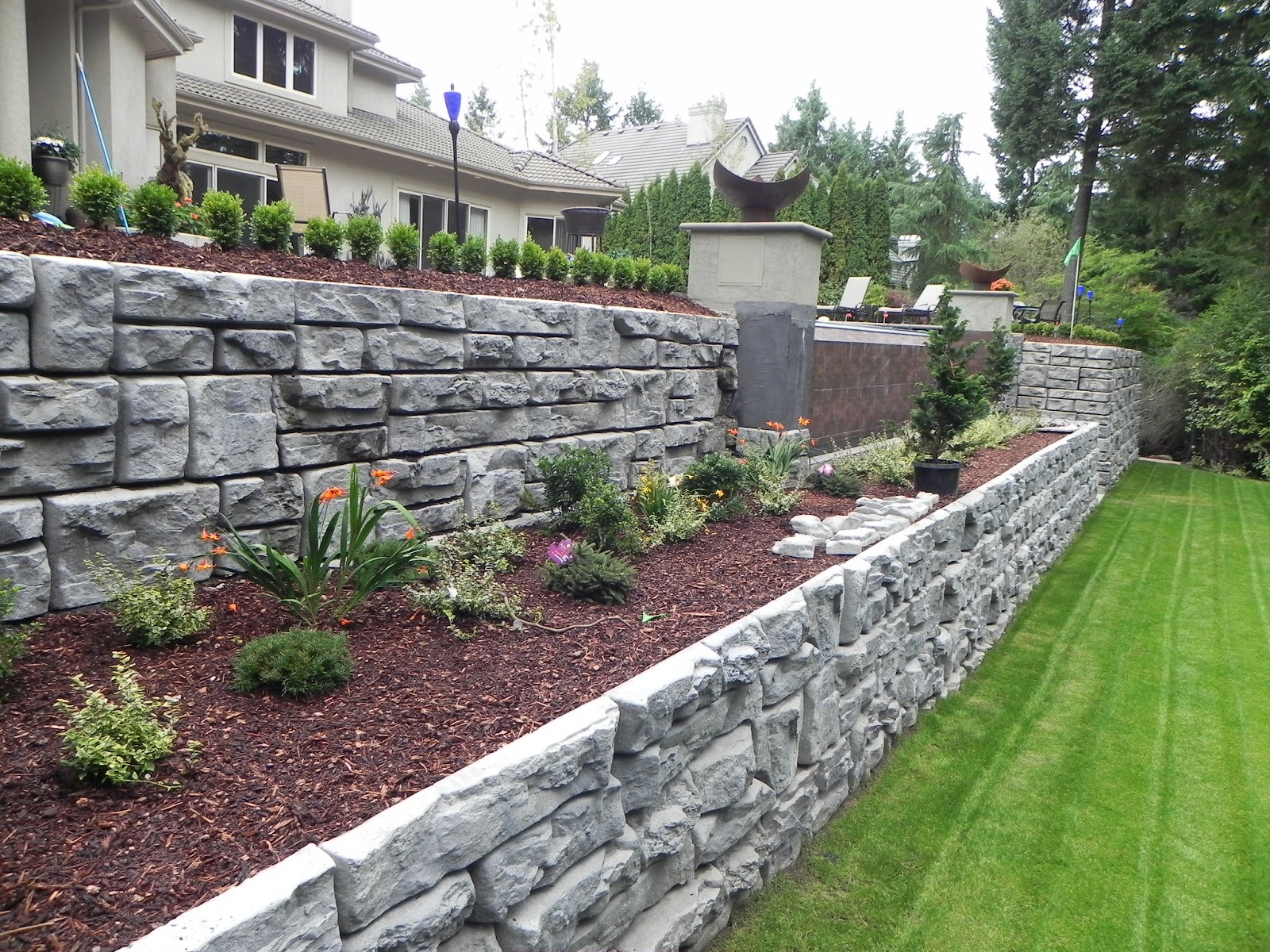Enhancing Home Security: The Duty of Retaining Walls in Soil Retention and Erosion Control
In the world of property management, preserving security and preventing erosion are vital problems for residential or commercial property owners and designers alike. Preserving wall surfaces stand as quiet guardians, playing an essential function in soil retention and erosion control. Their relevance expands past plain architectural assistance, affecting the total honesty and longevity of a building. By checking out the nuances of different types, design considerations, building methods, and maintenance tips associated with retaining walls, a deeper understanding of their critical function in enhancing home stability emerges. The elaborate dance between engineering prowess and environmental harmony reveals an engaging narrative that highlights the vital nature of maintaining wall surfaces in contemporary land administration.
Value of Retaining Walls in Stability
The significance of preserving wall surfaces in guaranteeing security within landscapes can not be overstated. Preserving walls play a crucial duty in holding back dirt, avoiding disintegration, and producing level surfaces in sloped areas. By giving architectural support, preserving walls aid to redistribute side stress caused by dirt, protecting against landslides and slippage. In addition to boosting the visual appeal of a residential or commercial property, maintaining wall surfaces add to the general safety and security and functionality of outside rooms.
Maintaining wall surfaces are specifically essential in hilly or uneven terrains where soil disintegration is an usual occurrence. Without appropriate support, soil erosion can result in the destruction of landscapes, jeopardizing the integrity of structures and posing dangers to occupants. Preserving wall surfaces function as obstacles, supporting the soil and preventing it from shifting downhill throughout hefty rains or other environmental stress factors.
Furthermore, preserving wall surfaces use long-lasting benefits by reducing upkeep prices connected with soil erosion and land instability. By spending in properly designed keeping walls, homeowner can ensure the long life and sustainability of their landscapes while advertising a aesthetically attractive and safe setting.

Sorts Of Retaining Walls for Disintegration Control
Gravity preserving walls are tough structures that depend on their weight to resist the stress of the dirt behind them. Cantilever retaining walls, on the various other hand, are made with a thicker base and make use of a lever arm to hold up against the soil stress.
For taller wall surfaces or where space is a restraint, secured keeping walls are usually employed. When choosing the suitable kind of retaining wall for disintegration control, aspects such as dirt structure, wall surface height, and site problems should be carefully taken into consideration to guarantee resilient stability and performance.
Design Considerations for Dirt Retention
The height and area of the keeping wall surface are vital variables that influence the total design. Designers must additionally consider the stress exerted by the maintained soil and prospective lateral tons to guarantee the framework's stability over time.
Moreover, the material choice for the preserving wall is crucial in improving longevity and performance. Concrete, hardwood, gabion baskets, and natural stone are usual materials utilized in retaining wall surface construction, each with its one-of-a-kind advantages and considerations. Correct drainage mechanisms, such as weep holes and French drains pipes, must be incorporated into the design to stop water accumulation behind the wall, which can result in structural failing and disintegration.
Construction Methods for Preserving Walls
When carrying out style considerations for effective soil retention, the construction methods for maintaining walls play an important function in guaranteeing structural stability and long-lasting stability. One common technique is the gravity wall, which counts on the weight and mass of the wall surface itself to withstand the pressure of the kept soil.
An additional extensively utilized building method is the cantilevered wall, which utilizes a concrete piece foundation that extends in reverse right into the preserved soil. This design provides added security and is ideal More Info for tool to high maintaining walls. For taller frameworks, strengthened soil strategies such as using geogrids or dirt nails can be web utilized to enhance the wall surface's stamina and stability.

Maintenance Tips for Building Stability
To ensure long-term residential or commercial property stability, routine maintenance methods are necessary for maintaining the honesty of retaining wall surfaces and preventing erosion issues. Cleaning the surface of the retaining walls can also help maintain their structural stability by eliminating dirt, particles, and greenery that can deteriorate the wall surface over time.
In enhancement to visual examinations and cleaning, it is necessary to examine the drain systems associated with the retaining wall surfaces. Making sure that drains are clear of blockages and operating effectively can prevent water buildup behind the walls, which can lead to pressure and possible failure. Correctly operating drain systems are vital for managing water flow and reducing the threat of erosion.
On a regular basis maintaining and checking keeping wall surfaces according to these suggestions can expand their life expectancy and add to the general official website stability of the residential or commercial property.
Final Thought
In verdict, retaining walls play an important function in improving building stability by preventing soil disintegration and preserving dirt in place. Regular maintenance of preserving walls is vital to ensure long-term stability and protection versus disintegration.
For taller wall surfaces or where space is a restriction, secured retaining walls are typically utilized. These walls make use of wires or strips that are anchored into the dirt or rock behind the wall to provide additional support. When selecting the suitable type of retaining wall for erosion control, factors such as soil make-up, wall surface elevation, and website problems need to be thoroughly considered to guarantee long-lasting security and effectiveness.
One usual method is the gravity wall surface, which depends on the weight and mass of the wall surface itself to resist the stress of the kept dirt. Cleaning the surface area of the retaining wall surfaces can also assist keep their structural honesty by removing dust, particles, and greenery that can weaken the wall surface over time.
 Joseph Mazzello Then & Now!
Joseph Mazzello Then & Now! Yasmine Bleeth Then & Now!
Yasmine Bleeth Then & Now! Jennifer Love Hewitt Then & Now!
Jennifer Love Hewitt Then & Now! Kelly Le Brock Then & Now!
Kelly Le Brock Then & Now! Michelle Trachtenberg Then & Now!
Michelle Trachtenberg Then & Now!